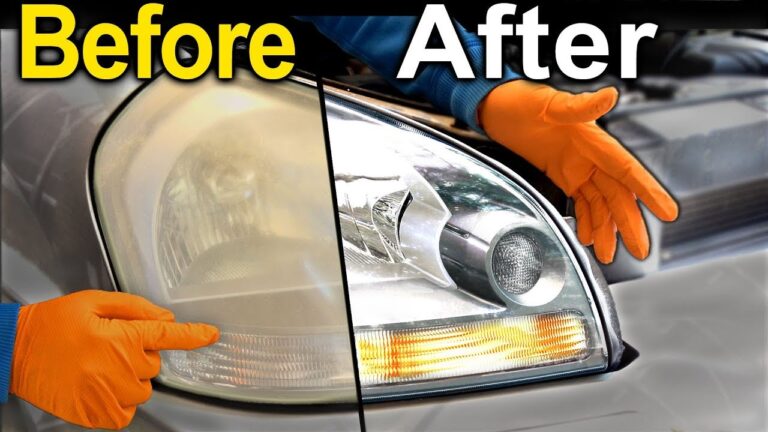How to Diagnose Car Brake Problems: Expert Tips & Tricks
Car brakes are very important. They help you stop your car. If your brakes have a problem, it can be dangerous. So, you need to know how to check them. This guide will help you. We will show you how to diagnose car brake problems.
Why Brakes Are Important
Brakes help your car stop. They keep you safe. Good brakes can prevent accidents. If your brakes are not working, you could crash. So, it is important to check them often.

Credit: www.kwikkar-lewisville.com
Common Signs of Brake Problems
There are many signs that your brakes may have a problem. Here are some common signs:
- Strange noises when you brake
- The brake pedal feels soft
- The car pulls to one side
- Vibrations when braking
- Warning lights on the dashboard
Strange Noises When You Brake
Sometimes, you might hear strange noises when you brake. These noises can be squeaking, grinding, or clicking. Squeaking can mean your brake pads are worn. Grinding can mean the brake pads are very thin. Clicking can mean the brake parts are loose. If you hear any of these noises, check your brakes.
The Brake Pedal Feels Soft
When you press the brake pedal, it should feel firm. If it feels soft or spongy, there might be a problem. This can mean there is air in the brake lines. It can also mean there is a leak in the brake system. You should get this checked right away.
The Car Pulls To One Side
When you brake, the car should stay straight. If it pulls to one side, there might be a problem. This can mean the brakes on one side are not working well. It can also mean the brake pads are worn unevenly. You should get this checked too.
Vibrations When Braking
If you feel vibrations when braking, it might be a problem. This can mean the brake rotors are warped. Warped rotors can cause uneven braking. This can be dangerous. You should get your rotors checked.
Warning Lights On The Dashboard
Modern cars have warning lights on the dashboard. If you see a brake warning light, there might be a problem. This light can mean low brake fluid. It can also mean a problem with the brake system. You should get this checked right away.
How to Check Your Brakes
You can check your brakes yourself. Here are some steps to follow:
Step 1: Check The Brake Fluid
Brake fluid is very important. It helps your brakes work. Check the brake fluid level often. If it is low, add more. Use the right type of brake fluid for your car.
Step 2: Look At The Brake Pads
Brake pads wear down over time. You can check them through the wheels. Look for the brake pad thickness. If they are thin, you need to replace them.
Step 3: Inspect The Brake Rotors
The brake rotors should be smooth. If they are warped or have grooves, they need to be replaced. You can see the rotors through the wheels too.
Step 4: Check For Brake Fluid Leaks
Look under your car for brake fluid leaks. If you see fluid, there might be a leak. This can be very dangerous. You should get it fixed right away.
Step 5: Test Drive Your Car
Take your car for a test drive. Listen for strange noises. Feel for vibrations. See if the car pulls to one side. If you notice any problems, check your brakes.
When to See a Mechanic
Sometimes, you need to see a mechanic. Here are some reasons to see a mechanic:
- You are not sure what is wrong
- You hear strange noises
- The brake pedal feels soft
- Your car pulls to one side
- You see a brake warning light

Credit: knowhow.napaonline.com
Preventing Brake Problems
You can prevent brake problems. Here are some tips:
- Check your brakes often
- Replace brake pads when they are thin
- Keep the brake fluid at the right level
- Get your brakes checked by a mechanic
Frequently Asked Questions
What Are Common Signs Of Brake Problems?
Common signs include squeaking, grinding noises, longer stopping distances, and a spongy brake pedal.
How Often Should Brake Pads Be Replaced?
Brake pads typically need replacement every 30,000 to 70,000 miles, depending on driving habits and conditions.
Why Are My Brakes Making Noise?
Brake noise can indicate worn pads, dirty rotors, or lack of lubrication on brake components.
What Causes A Spongy Brake Pedal?
A spongy brake pedal is usually caused by air in the brake lines or low brake fluid.
How Do I Check Brake Fluid Levels?
Locate the brake fluid reservoir, check the level against the marked indicators, and ensure it’s within the recommended range.
Why Does My Car Pull When Braking?
Your car may pull due to uneven brake pad wear, a stuck caliper, or misaligned suspension components.
What Should I Do If Brakes Fail?
If brakes fail, pump the brake pedal rapidly, downshift to a lower gear, and use the emergency brake to stop safely.
Conclusion
Car brakes are very important for your safety. You should check them often. Look for signs of problems. If you find a problem, get it fixed right away. Use this guide to help you diagnose car brake problems. Stay safe on the road!





